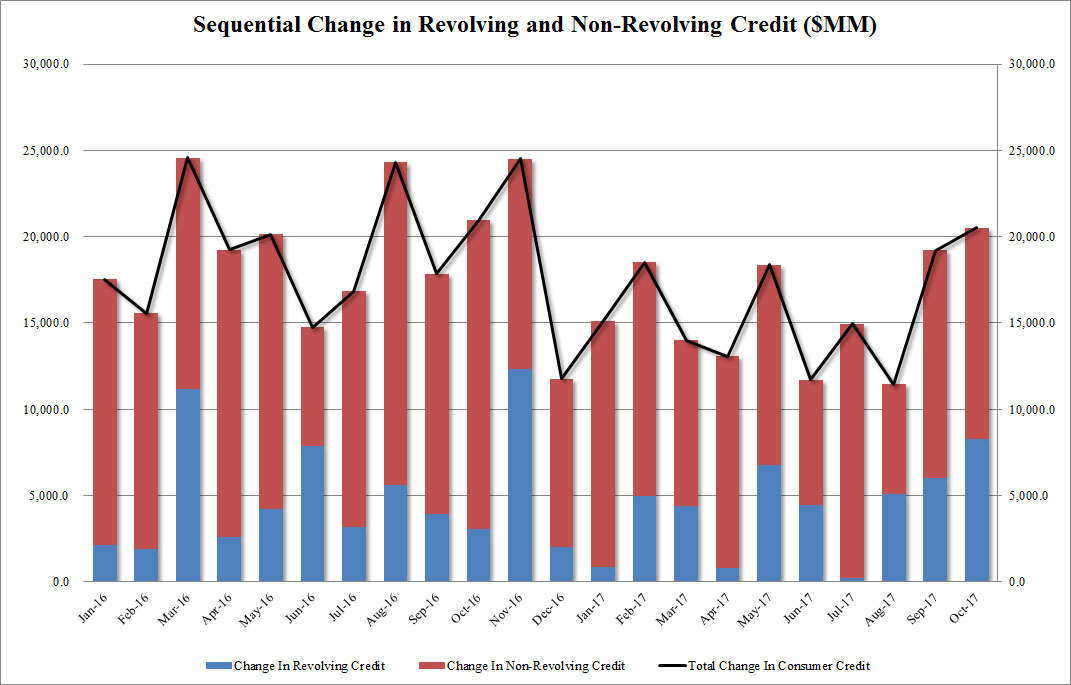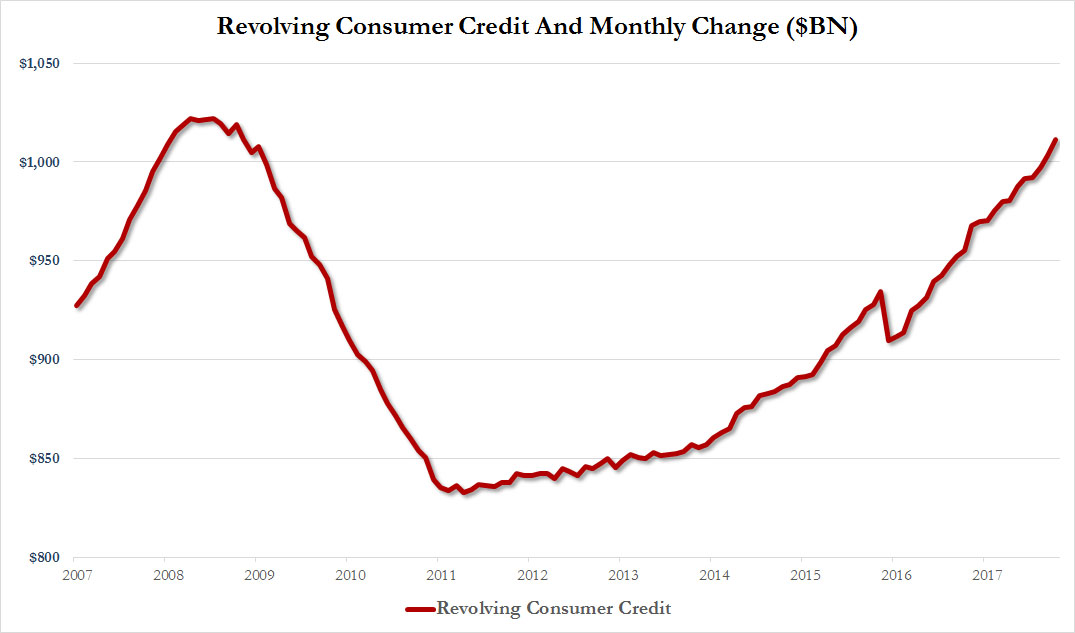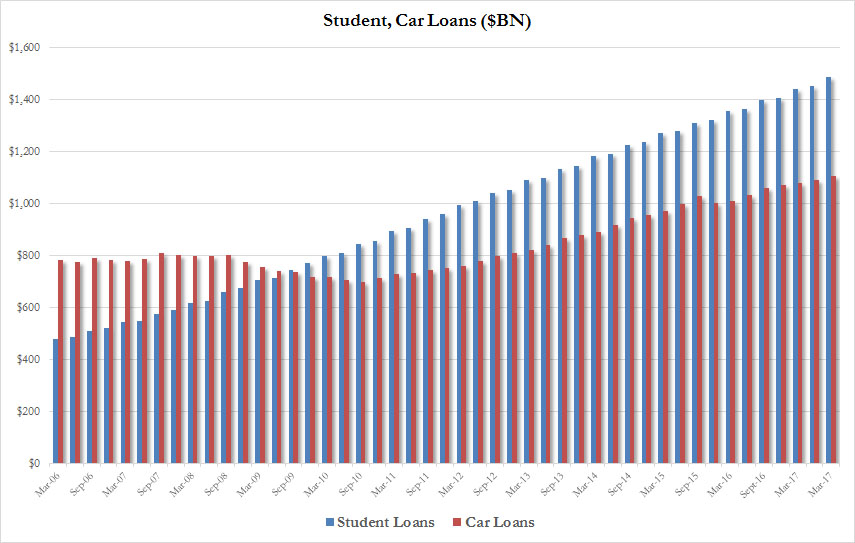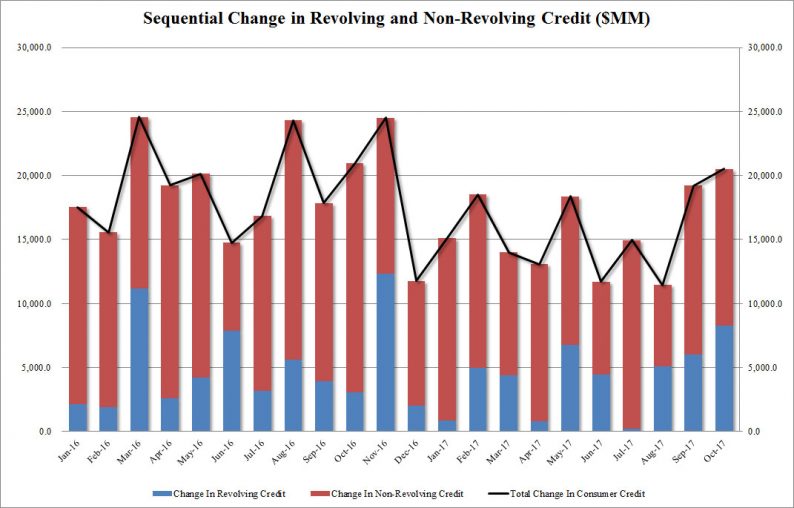Earlier in 2017, using the latest – and soon to be revised – Fed data, newspapers and financial media reported that US consumer credit card debt had risen above $1 trillion for the first time since the financial crisis.
Ironically, just a few months later the Fed revised its data series sharply lower, sending the revolving credit total back under this “psychological number.” At least until recently, when the latest consumer credit update from the Fed disclosed that in October, consumer credit rose by $20.5 billion, more than the $17.5 billion expected, of which $12.2 billion was non-revolving, auto and student loans, and $8.3 billion was credit card debt. This was the biggest monthly increase in credit card debt since last November’s (revised) $12.3 billion.
Total consumer credit rose by 6.5% Y/Y, rising to $3.802 trillion as of Oct 31. That number is more than double the rate of increase of US GDP or wage growth, making it clear just where America’s “purchasing power” comes from.
Finally, this was also the single biggest monthly increase in consumer credit since November 2016.

And while nonrevolving credit reached a fresh record high of $2.791 trillion, revolving – or credit card debt – is now back well over a trillion dollars or $1.011 trillion to be precise, and fast approaching the all-time bubble high of $1.02 trillion hit in the summer of 2008.

And speaking of student and auto loans, the Fed’s latest data showed that in the third quarter, these rose to a new all time high, of $1.108 trillion for auto loans, and a record $1.486 trillion in student loans. The Fed also reported that nonrevolving lending to consumers by the Federal government, which is mainly student loans, rose to $1.137t, on a non-seasonally adjusted basis.














Leave A Comment